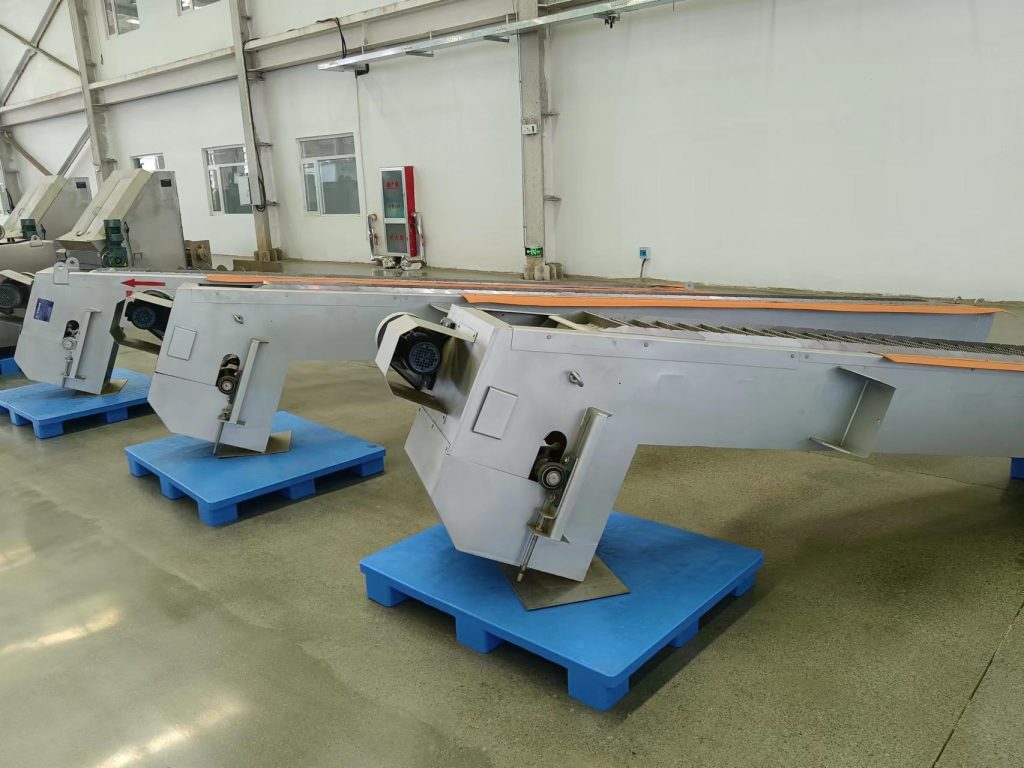What is a wastewater bar screen?
Wastewater treatment involves many comprehensive steps to remove debris, grits, grease, and other pollutants to produce clean water. It involves several screenings, biological degradation, the addition of chemicals, disinfection, and much more.
The first step, though, is the removal of the largest objects in wastewater. For this purpose, we need bar screens.
What is a wastewater bar screen and how does it work? Keep on reading to learn more.

Wastewater Bar Screen
A bar screen is a filter that removes big solid objects from the wastewater. It’s a type of coarse screen that takes out rags, plastics, papers, metals, etc. from any flowing water. As the name implies, it usually consists of vertical steel bars spaced 1 to 3 inches apart.
It’s usually the first step in a wastewater system. What follows are other screens and treatments to remove other pollutants.
By removing the large solids, we can prevent damage and unnecessary wear and tear. This reduces maintenance needs and potential issues for the whole system.
The removal of large solids also minimizes interferences in the whole treatment process. It prevents clogging, for instance, and it prevents contamination of the waterways.
How It Works
The simplest bar screens only have vertical bars that let water pass through while stopping big objects. It’s a basic system that does the job, although it’s not as efficient. The objects can build up in the screen, which can stop the flow of water and elevate the backwater levels.
Today, plants and facilities typically use a conveyor system. In this type, bars or wires pick up the solids trapped in the screen and then carry them somewhere else.
The objects don’t accumulate on the screen because the filters move through and out of the water. This is a type of mechanical bar screen, which we’ll discuss later.
This method keeps the flow of water steady as there’s a lower risk of clogging. Without this mechanism, the bar screens can get clogged within minutes. In cases of high volumes of coarse matter or high-speed water flow, this can happen a lot.
The collected objects get deposited in another container of a given capacity. This would depend on a facility’s acceptable rate of disposal procedures. Other systems dump the waste into a compactor or conveyor.
Manual Wastewater Bar Screen vs Mechanical Bar Screen
For a smooth and continuous operation, it’s important to prevent clogging. The flow of water must remain steady at all times, which is why we have different types of bar screens today. They differ on the cleaning system.
Manual Screening System
Manual bar screens need frequent raking to remove the accumulated waste. As you would expect, this method is labor-extensive.
As such, only older plants have manual screens as their primary screening system. It’s also useful in smaller facilities and bypass channels.
The size of the openings range from 1 inch to 2 inches (30 mm to 50 mm). The bars incline at 30 to 45 degrees, which facilitates better cleaning.
These types of bar screens have a much larger area submerged in water. This allows for less frequent raking, but it’s still time-consuming. They shouldn’t be larger than 3 meters, though, for convenient raking.
The cleaning process can be dangerous, as well, and the time it takes to clean might cause an overflow. While the mat is out for cleaning, flow surges may also occur.
The use of manual bar screens is declining in favor of automated processes, even in smaller plants. However, this system is still surviving as it can serve as a back-up system. It’s a safety measure that new plants practice in case the primary screening device is out of service.
A small advantage is that the equipment requires little maintenance at all. Small plants with only a few screenings can also make manual bar screens work for them.
Mechanical Bar Screen
Mechanical bar screens are the opposite. They use an automated cleaning process to keep the screens free from debris.
There are few concerns over overflowing backwater because the debris won’t accumulate. They usually have a screening compactor nearby to convey the waste to a disposal area.
Aside from the ease of cleaning, mechanical screens also improve the flow conditions. This system is not as labor-extensive, so it reduces labor costs. However, it has higher initial costs and it’s much more expensive to maintain.
Mechanically-cleaned bar screens have smaller opening sizes of 0.25 to 1.5 inches (6 mm to 36 mm). The bars can be steeper at 0 to 30 degrees as employees don’t have to rake the debris.
New facilities almost always have mechanical screen cleaning systems as their primary device. They have more advantages than disadvantages. For this reason, manual bar screens are disappearing from industrial settings.
They have four principal types: chain-driven screens, reciprocating rake, catenary screen, and continuous belt screen.
Chain-driven screens use screens for cleaning. The rake can go up or down, depending on if the flow of water is from upstream or downstream.
In the reciprocating rake system (or climber screens), there is only one rake. The rake moves to the base and pulls the waste to the top, where they get disposed of. As this type only has one rake, it can have limitations in heavy screening applications.
A catenary screen has a rake that’s positioned against the bars. The rakes travel upwards to deposit the waste in a chamber.
Then, we have the continuous belt screen. It’s a continuous screen with a large number of rakes.
Choose the Right Bar Screens
As the preliminary or first step in the wastewater treatment process, bar screens serve a crucial role. The other equipment depends on them to do their job well. As such, you need the right wastewater bar screen for your facility.
The volume of water and waste are only some of the factors you have to consider. Contact us today and let us help you decide.
